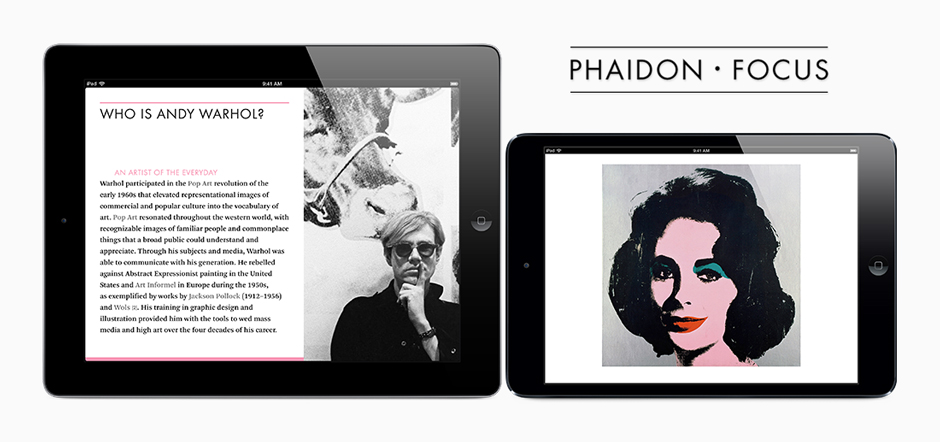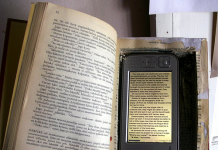Two recent articles tackle the deficiencies of current ebook formats from different directions. In Poynter, Bill Adair observes that the “Unfulfilled promise of e-books offers lessons for news organizations” – although his article actually focuses most on the limitations of ebooks for delivering music excerpts and visual aids. And in the UK’s The Observer Sunday newspaper, Anna Baddeley asks, “Where’s the artistry in digital art publishing?”
Both articles lambast ebooks for failing to capitalize on digital media to deliver a richer experience. “Legacy media is still thinking like … legacy media,” objects Adair. “Book publishers still have an old-school mentality — like many newspaper editors.” Baddeley’s critique, meawhile, is prefaced: “Art ebooks must possess elements that can’t be found in print if they are to succeed.”
 Adair continues: “E-books offer great opportunities for magazine and newspaper editors because the digital versions can include video, audio and other content that will enrich a story … to do e-books right, editors and book publishers should take advantage of their multimedia features.” He then complains that Peter Ames Carlin’s “Bruce” comes without audio. “There undoubtedly are hours and hours of video and audio that would complement Carlin’s smart prose,” he remarks, though he notes that Carlin mentioned insuperable licensing difficulties.
Adair continues: “E-books offer great opportunities for magazine and newspaper editors because the digital versions can include video, audio and other content that will enrich a story … to do e-books right, editors and book publishers should take advantage of their multimedia features.” He then complains that Peter Ames Carlin’s “Bruce” comes without audio. “There undoubtedly are hours and hours of video and audio that would complement Carlin’s smart prose,” he remarks, though he notes that Carlin mentioned insuperable licensing difficulties.
Baddeley, meanwhile, takes two of the UK’s major art book publishers, Tate Publishing and Phaidon, to task for “failing to crack digital … If digital art publishing has a future, it needs to do what can’t be done on the page. Zoom in on brush strokes. Click on details. Compare multiple versions of the same picture.”
Is it so? Of course, hyperlinks in ebooks are already a reality, but the efforts required to work with licensing restrictions are likely to remain immense – and above all, pointless. Most up-to-date browsers these days willl do a web search for you straight from a highlighted text passage, and even within ebooks, a search for a video, MPEG or image of any work within an ebook is usually just a cut-and-paste away. At most, the publisher is sparing the reader one step in the process. And the reader can get a far wider choice of options, without the burden of working through the publisher’s official licensor. Is there really enough of an incentive for the publisher to hold the reader’s hand through that one baby step?
 Besides, some art ebooks are already at least high-resolution and zoomable. They could be made more interactive, but then what is an ebook going to be able to do that an interactive web page couldn’t do better? And all Adair asks from Dan Brown’s “Inferno” is some maps and images. No doubt the book would have been better for them. But they’re hardly beyond the limitations of print publishing either. And presumably an illustrated edition of “Inferno” wouldn’t be that hard to come by – or to create.
Besides, some art ebooks are already at least high-resolution and zoomable. They could be made more interactive, but then what is an ebook going to be able to do that an interactive web page couldn’t do better? And all Adair asks from Dan Brown’s “Inferno” is some maps and images. No doubt the book would have been better for them. But they’re hardly beyond the limitations of print publishing either. And presumably an illustrated edition of “Inferno” wouldn’t be that hard to come by – or to create.
I’m still persuaded that the real disruptive innovation in ebooks is being done in marketing, distribution, and creation, not in layout and e-printing. So the containers themselves remain relatively conservative in design, fine. But if they’re transforming the way that books are written and disseminated, isn’t that already far more of a contribution than adding a few AV/interactive bells and whistles? Computer games will always do the multimedia and interactivity a lot better anyway. Why not let books continue to be books – only, from a lot more hands and in a lot more places than ever before.


































The aversion to dealing with copyright comes from publishers who, like electricity, take the path of least resistance every time. It’s easier to pay someone because the cost is passed on to the consumer.
So, without a tradition of asserting fair use exemptions and in-house production in the print world, those who would self-publish or become born digital publishers have no models to follow in this area of the business. They are left to their own devices.
Unfortunately for them, writers who eschew the full potential of digital will be like film makers who didn’t quite understand “talkies” and Technicolor. Publishers cannot help reticent writers by tacking on audio and video any more than Michelangelo could outsource his mixing of color and brush strokes to any good effect.
I guess I don’t care that most writers and publishers aren’t ‘enhancing’ narrative work. But when a printed textbook, or even a ‘Dummies’ print edition comes with an audio CD or a DVD containing examples and illustrations — especially for a subject like music — I’m actually *angry* that that content isn’t integrated into the e-book. Isn’t that the point? All of the functionality is right there on most devices. It’s easy to disable downloading of the multimedia edition to a device that *lacks* speakers or a sound card. The thing is, in many cases, the e-book is *more expensive* than the print edition, *and* lacks the added content, the integration, or both.
Publishers thinking this might be ok must have bumped their heads on something. If they don’t like their numbers in electronic sales of such titles, I’d suggest that might be why.